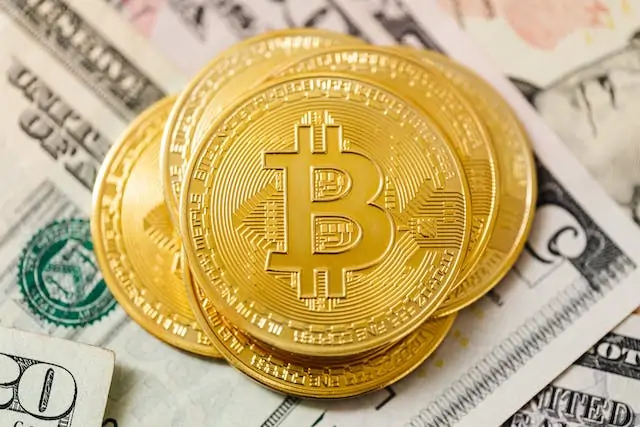With just days left before a spot Bitcoin ETF is expected to be approved by the US Securities and Exchange Commission (SEC), Alistair Milne, Chief Investment Officer (CIO) of Altana Digital Currency Fund, addressed several myths surrounding the Spot Bitcoin Exchange-Traded Funds (ETFs). In recent weeks and months, several shockingly false rumors have persisted, painting a false picture of the future with a spot ETF.
Busting Myths: A Look At The Most Shocking Rumors
Milne emphasized the stringent legal and operational frameworks governing spot ETFs. With this, he addressed the common myth that spot ETF could water down the 21 million supply of BTC by injecting “paper Bitcoin”. He stated, “Spot ETFs are legally obliged to invest net inflows in BTC, which will be held by a custodian, fully audited, etc.”
Moreover, ETF providers like BlackRock, Fidelity and Bitwise are ‘seeding’ their ETFs with cash on exchanges to be ready to buy Bitcoin when inflows occur. This is a proactive measure to manage liquidity and maintain the ETF’s performance in line with Bitcoin’s market movements – – but again, no manipulation is taking place.
Also, the spot ETFs actions are dictated by inflows and outflows, not by discretionary decisions of the fund managers like BlackRock’s Larry Fink. This means the buying and selling of Bitcoin by the ETF are purely transactional, based on the fund’s need to balance inflows and outflows. “ETF providers have no discretion with regards to buying or not buying, only inflows/outflows may dictate their trading,” Milne clarified.
In the same vein, unlike derivative ETFs, spot Bitcoin ETFs involve actual BTC, which underscores their direct link to the cryptocurrency’s market dynamics. “Bitcoin spot ETFs will dramatically increase the proportion of spot BTC traded vs derivative (unbacked) volumes … reducing the influence of the latter BTC’s price will be more difficult to suppress, not easier,” Milne explained.
ETF That Underperforms Bitcoin Will Go Out Of Business
Market Makers (MMs) and others will trade or arbitrage the ETF’s stock versus spot Bitcoin. This is done to ensure that the ETF is priced as close to the actual market value of BTC as possible, thereby exploiting any inefficiencies for profit. Milne further elaborated that a spot ETF that underperforms Bitcoin (before fees) will likely go out of business, as its value is expected to mirror that of Bitcoin’s market performance.
The discussion on X also ventured into the dynamics of investor movement between different ETF providers. In response to a query about potential shifts from Grayscale Bitcoin Trust (GBTC) to other ETFs, Milne clarified, “GBTC will instantly be at par value, so the only sellers are likely those who bought at a discount and want to rotate back to self-custody (like me). Net effect after 1-2 working days would be zero. Someone selling GBTC and buying, for example, IBTC the same hour should have no effect either.”
Another myth revolves around the trustworthiness of ETFs. A user expressed skepticism about reliance on traditional auditing methods, suggesting that on-chain signed messages from the custodians would be the only reliable proof to prevent fraud like FTX.
Milne countered this by highlighting that “BTC holdings will have to be attested to by their custodians and also audited by firms far more reputable and knowledgeable than FTXs. For example, they will require they prove control of the keys for all addresses.”
At press time, the BTC price traded at $42,595.
Featured image created by DALL·E 3, chart from TradingView.com
Credit: Source link










![Dogecoin [DOGE] January End Price Prediction](https://news.coinspectra.com/wp-content/uploads/2024/01/kanchanara-pQEfJZYDpL0-unsplash-100x70.jpg)











 Bitcoin
Bitcoin  Ethereum
Ethereum  XRP
XRP  Tether
Tether  Solana
Solana  USDC
USDC  Dogecoin
Dogecoin  Cardano
Cardano  Lido Staked Ether
Lido Staked Ether  TRON
TRON  Chainlink
Chainlink  Avalanche
Avalanche  Wrapped Bitcoin
Wrapped Bitcoin  Wrapped stETH
Wrapped stETH  Stellar
Stellar  Sui
Sui  Toncoin
Toncoin  Hedera
Hedera  Shiba Inu
Shiba Inu  WETH
WETH  LEO Token
LEO Token  Litecoin
Litecoin  Polkadot
Polkadot  Bitget Token
Bitget Token  Bitcoin Cash
Bitcoin Cash  Hyperliquid
Hyperliquid  USDS
USDS  Uniswap
Uniswap  Wrapped eETH
Wrapped eETH  Ethena USDe
Ethena USDe  Pepe
Pepe  MANTRA
MANTRA  NEAR Protocol
NEAR Protocol  Aave
Aave  Monero
Monero  Ondo
Ondo  WhiteBIT Coin
WhiteBIT Coin  Aptos
Aptos  Internet Computer
Internet Computer  Official Trump
Official Trump  Mantle
Mantle  Ethereum Classic
Ethereum Classic  Dai
Dai  Cronos
Cronos  POL (ex-MATIC)
POL (ex-MATIC)  Bittensor
Bittensor  OKB
OKB 
